Five Views of the Monomyth… (Velikovsky 2017)
Namely:
(1) Propp 1928,
(2) Campbell 1949,
(3) Vogler 1992,
(4) Velikovsky 2017
and
(5) Popper 1999.
THE BACKSTORY: So, recently (over the past month) I have become very interested in Heroism Science…!!!
I found out about it while researching my article in the Journal of Genius and Eminence (my article comes out in the JoG&E in: early 2018.)
Call For Papers – Journal of Genius & Eminence (Joseph Campbell Special Issue, Sept 2017)
And so, below, I separate the hero journey monomyth (Campbell 1949) out into three views:
(1) the `smaller’ 12-step view of the condensed `hero journey’ (Vogler 1992),
(2) the `medium-sized’ 17-step view of `the monomyth’ (Campbell 1949),
and
(3) the `larger’ 32-step view of the morphology of the Russian Folk Tale (Propp 1928).
In one sense, I suppose this blog-post could also be viewed as a super-brief Literature Review.
Namely a Lit Review of the monomyth, in its three most popular (or, currently well-known) forms…!
And then – an analysis (separation into the parts) and then synthesis (reassembly into the whole)… of that literature on the monomyth.
But right now, I wish to tell a story –
Campbell’s (1949) monomyth – as interpreted by Vogler (1992)
Back in the dim-dark-distant past, about twenty years ago, in 1995-6, when I was a screenwriting student at the AFTRS (Australia’s official national training centre for media), the book The Writer’s Journey (Vogler, 1992) was one of our recommended screenwriting texts.
(This was the biggest image I could find of the 1992 cover of the book I knew and loved in 1995… but let’s just say – the book below looks so small, because… it is very far away… i.e. …it’s all about Scale… and Perspective…)
Not only that, but the author and great thinker himself, Christopher Vogler was one of our screenwriting guest lecturers-! [i]

Chris Vogler lectures in Tel Aviv. But he also lectured a lot like this, at the AFTRS, too. (Photo by Etan J. Tal, creative commons, some rights reserved)
Hey and while we’re at it, here’s my AFTRS graduation short film. It was written by The Great Van de Velde and myself, and was also directed by The Great Van de Velde himself.
And it (ROCK et MAN [1997]) actually won Best Short Film in the World, (well – out of all 117 film schools in the world, at that point in time), at the 1997 CILECT film schools congress. (…Go figure.) (Ask John Colette about it, he was there.)
Then Fox Studios saw it (ROCK et MAN) and asked The Great Van de Velde and myself to create a sci-fi TV series to replace The X-Files on Fox. But, that’s a whole other story.
And so – anyway – in his landmark 1992 book, Chris (Vogler) adopted the Jungian character archetypes of Joseph Campbell (1949), and used them to analyze characters in certain popular films.
Namely: the Hero, the Mentor (Wise Old Man or Woman), the Shadow (villain), the Threshold Guardian, the Shapeshifter, Trickster, Allies, and also Enemies character archetypes.

The Seventh Seal (Bergman 1957). Not sure why this is here, I just like it. Oh yeah – archetypal characters.
But while we’re on this, I should point out, not all monomyth (heros journey) stories are successful. For example, this one (by George Lucas) certainly wasn’t (successful as a movie, I mean):
At any rate, Vogler (1992) also adeptly condensed the seventeen (17) plot-steps (aka `story beats’) of Campbell’s (1949) monomyth into twelve (12) key story steps that movie screenwriters might perhaps choose to use as a movie story `algorithm’ (a recipe, or mudmap, or template).
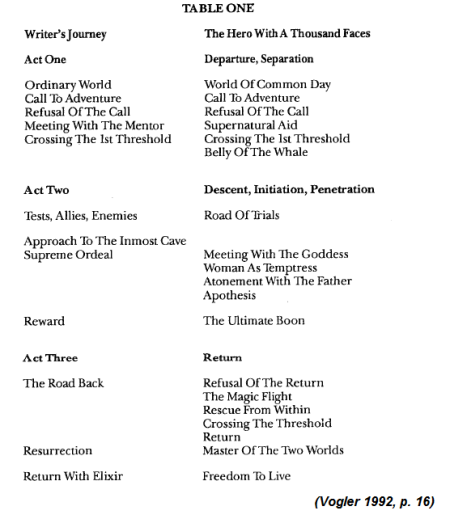
(Vogler 1992, p. 16) 12 steps on the left, and 17 on the right…! (actually there is 18 on the right, as Vogler added Step 0. World of the Common Day to Campbell 1949 here) …and rightly so-! This is the same reason that I have added Step 0 [Life Goes On As Usual] to my diagrams.
This is a writing tool (template, recipe, algorithm, formula) you can use when – as a screenwriter – you are aiming to create a movie narrative that may, perhaps, likewise find `universal’ mythical resonance with audiences.
But I should note: it doesn’t always work. 🙂 (See WILLOW, and a bunch of other monomyth stories that aren’t all that great, frankly. Still, everyone’s a critic!)
If you want to get deep into What Exactly Is Success ? Then check these posts out.
My PhD Research Question / The Problem: What makes a `great’ film story?
- StoryAlity #18 – The Problem: 7 in 10 Feature Films Lose Money
- StoryAlity #19 – How Many Movies Are There?
- StoryAlity #20 – What Exactly is, a `Successful’ Film?
- StoryAlity #21 – What Makes A Film Succeed? – The Story.
- StoryAlity #22 – So What Doesn’t Necessarily Make a Movie Successful?
- StoryAlity #23 – Define “A Film Story”
On the other hand, this was a successful monomyth movie:
See also:
- StoryAlity #3B – Trailers of the Top 20 RoI Movies
- StoryAlity #3C – Trailers of the Bottom 20 RoI Movies
Anyway back to Vogler (1992):

Stages of the Hero’s Journey – and how many screenplay pages in a 120-page screenplay (or, 120 minute movie) to devote to each stage, or section, or phase, or step of the hero journey (see: Vogler 1992 p. 18)
If you want your story (and, screenplay, and movie, or novel) to be successful, it also has to do lots of other things right, as well.[ii] Using the monomyth as a story template is good, if you’re telling a hero journey story. (You may not be. There are lots of story types. See Blake Snyder’s Save The Cat! Goes To The Movies genre system, for one. It’s all in my (2016) PhD thesis, anyway.
So in short, Vogler’s (1992) highly-compressed `hero’s journey’ story algorithm is as follows:
- `Heroes are introduced in the ORDINARY WORLD, where
- they receive the CALL TO ADVENTURE.
- They are RELUCTANT at first or REFUSE THE CALL, but
- are encouraged by a MENTOR to
- CROSS THE FIRST THRESHOLD and enter the Special World, where
- they encounter TESTS, ALLIES, AND ENEMIES.
- They APPROACH THE INMOST CAVE, crossing a second threshold
- where they endure the ORDEAL.
- They take possession of their REWARD and
- are pursued on THE ROAD BACK to the Ordinary World.
- They cross the third threshold, experience a RESURRECTION, and are transformed by the experience.
- They RETURN WITH THE ELIXIR, a boon or treasure to benefit the Ordinary World.’ (Vogler, 2007, p. 19)
And for more see The Writers Journey webpage…
Also… I think we now must ask:
Is it just a coincidence, that Christopher Vogler was born in 1949, the very-same-year that Joseph Campbell published his book, `The Hero With A Thousand Faces’ (1949).. ???
And if you ask me; Yes.
Yes, it is. It is just a coincidence.
Or, not. Either way, it doesn’t change much.
Also – as Chris notes, you can view the monomyth (the outer journey) as a cyclical journey.
Also the hero’s inner journey:
And you could even view it (sideways) as Garstang’s evolutionary spiral…!

Garstangs evolutionary spiral (see this post for more on all that)
More on Garstang’s spiral (1922) here:
- StoryAlity #100 – The Holon-Parton Structure of the Meme – the Unit of Culture (Velikovsky 2013, 2014, 2016)
- StoryAlity #101 – A Science of Memetic Culturology (Velikovsky 2013)
Either way:
You could also check out The Heros 2 Journeys by Vogler and Hauge.
(I watched this DVD years ago, when it came out. I was writing a feature film script… I’ve written about 30 of them, all using different methods). But anyway, that’s a whole other story. Or, about 30 other stories.
Hey is it just me or does Michael Hauge look heaps like filmmaker/scientist James Cameron..?
(Cameron is consilient, he combines Science and the Arts. He went very deep in the ocean – and discovered a bunch of weird lifeforms down there.)
See also:
And see this monomyth story:
And Now, for a FLASHBACK –
to:
Joseph Campbell (1949), & his 17-step monomyth (!)
Back in 1949, the now-legendary comparative mythographer Joseph Campbell published The Hero with a Thousand Faces (1949).
That book was a study of certain common narrative patterns in many extant (surviving) ancient myths, religions, folklore, and folk tales that Campbell examined.I should point out – I am certainly not saying that all stories are a hero journey monomyth.
Neither was Joe Campbell saying that. He just felt there was one story type that came up (and stuck around) more than others.
…If you doubt that, then I think you really need to read my PhD thesis.
Also my Movie Screenwriting Workbook I wrote in 1995, and 2011, that examines other story types. Not just monomyth stories.
Also, as the great Van de Velde once noted, in a lot of classic Aussie stories (movies, books, etc), the hero dies at about 10 o’clock… (LOL! YIKES!!!)
(See: Breaker Morant, Gallipoli, Burke & Wills, Chopper – and a whole bunch of others.)
But anyway – I mean: Yes – stories are always about, problem-solving.
See: Gottschall’s definition of story from The Storytelling Animal (2012):
`Story = Character + Problem + Attempted Extrication’
If you don’t have a character with a problem, and them trying to solve it, then you don’t have: a story.
But I digress. Back to the monomyth…
(…Which is not the only kind of story.)
But – it is a hero journey story…
Like this… sort of.
Or this:
Also the first 40 minutes of this documentary makes some very interesting points about messianic heroic journeys (Jesus, Buddha, etc). Not sure about the rest of the film.
(Side Note: Not everyone wants to be an epic, legendary, hero. …It can be risky and hard work, LOL. Then again – you might be an Everyday Hero! Or anything in between…)
In literature and the media (movies, TV, games, comix, etc) there are also Villain Triumphant stories, but I won’t get into that here… (Maybe read my PhD for more on that. Or, not. People tell me it’s very readable. It’s also, free… Who doesn’t love free stuff?)
Back to – the monomyth:
Campbell’s 17-step monomyth (1949)
My own diagram of one common pattern, that he (Campbell 1949) identified in these narratives is below.
In the above diagram, please note that I have also added `Step 0 – Life Goes On As Usual’, namely some of `The Backstory’, before `The Problem presents, or is discovered, or is created.[iii]
Next:
Vogler’s 12-step monomyth (1992)
Later, in 1992, the Hollywood movie story analyst, Christopher Vogler, compressed these 17 steps of Campbell’s monomyth, down into 12 steps:
Note also that in the figure above, I have also repeated the Step `1. The Ordinary World’, just for consistency’s sake.
Mainly since, as we compare these three models of the monomyth (i.e., Campbell, Vogler, and Propp), `Step 0’ represents the same thing in each (i.e., it stands for: The Backstory).
(And so, on the bottom row of the 12-step Vogler diagram [above], we could in fact, very well collapse steps `0’ and `1’ into one single step. But: not yet!)
And now…
Propp’s 32-step monomyth-! (1928)
And so now, if we also travel back further in time – to the year 1928 – we see: that year, Vladimir Propp published his discovery of a much larger (or, more detailed) – but extremely-similar pattern to Vogler (1992) and also to Campbell (1949).
Propp had independently (and much earlier) found this same pattern was common to many Russian folk tales! His book was called The Morphology of the Russian Folk Tale (1928).
This says something about human universals, right?
Maybe: All Life Is Problem Solving…? (Maybe Popper was right about that…?!)
Anyway here’s Vlad Propp’s 32-step monomyth as a diagram.
So – if we now compare the 32 steps of (Propp, [1928] 1968, 2009) to the 17 steps of (Campbell, 2008, [1949] 2004) (see diagram below), it looks as if they are essentially the same story algorithm (or recipe, or formula, or template, or mudmap, or mindmap).
…Except, perhaps, Joe Campbell has missed some steps-?!
Namely, Vlad Propp’s Steps 1 through 8; and Steps 18 & 19; and also Steps 25 through 31…?
And we see Propp (1928) has also compressed certain other steps (namely, Campbell’s steps 7 and 8 are compressed (in the diagram above) into Propp’s Step 14.
Also, Joe Campbell’s Steps 9 and 10 are compressed into Vlad Propp’s Step 17.
Note also that Campbell’s Steps 3 and 5 appear out of chronological order when `fitted’ to Propp (since the `Mentor/Donor’ character archetype usually gives the `Supernatural Aid’).[iv]
Okay so – now we’re all getting confused. (Too many numbers.)
Symbols (e.g. like, numbers) can be overwhelming when we see too many of them at once. (We humans aren’t naturally all that great at Maths. Personally, I blame Evolutionary Psychology. Still, it’s the only Psychology we’ve got.)
To be clear, in (Fig. 4, above), the (32) numbered steps of Propp (1928)’s story algorithm are all listed along the bottom row…
So – I have gone to the trouble of pattern-matching the (17) comparable steps of Campbell (1949) to, their most-obvious equivalents of the 32 steps, in Propp’s (1928) model.
I sure hope this all makes sense.
If not, maybe just keep staring at all the diagrams above until it does, (LOL).
And Now, Comparing Propp’s 32 steps – to Vogler’s 12 steps…
Moreover, now we can also make a similar comparison of Propp (1928) to Vogler (1992):
As with the prior comparison of Propp’s (32 step) model to Campbell’s (17 step) model:
Propp’s 32 steps again appear on the bottom row of the diagram above, and meanwhile I have aimed to pattern-match Vogler’s 12 equivalent steps (or, `story beats’) with their closest Proppian equivalents.
And Now, Here Comes The Kicker:
So – on the above view, I now suggest that Propp (1928), Campbell (1949) and Vogler (1992) were all looking at the same thing – (!!!)
Perhaps, they were merely all viewing the same object, from different distances..?
Maybe, Propp (in 1928) viewed it in a more detailed (`close-up’) view, and maybe Campbell (in 1949) from further away (by using a medium-view), and maybe Vogler (in 1992) took in the view from still further away, namely `the long view’.[v]
After all, these 3 excellent scholars were all just looking at lots of popular stories, and then, spotting a major pattern in them. …Right?
(Actually speaking of excellent scholars – and cognitive play with pattern – check out Brian Boyd’s monumental work On the Origin of Stories: Evolution, Cognition, and Fiction 2009)…

Lots of stories. In: lots of books. Books are units of culture. So are words. So are sentences. So are images. So are stories. So are whole cultures.
But… maybe consider this – perhaps, also…
Three people in a darkened room – with an elephant – will each grasp at different parts of the same mysterious object, and each will assert that it is like:
(1) a wall (the flank), (2) No, a tree (a leg), and (3) No, a rope (the trunk)… and heeeeey, wait a minute! Just how many legs has this thing actualy got.. (??!!!)
(I am not suggesting Propp, Campbell and Vogler did not do a great job! They did!)
But what if we hit the light-switch in that darkened room?
So in this new light, here once again – is the `3 views of the monomyth’ diagram.

The hero journey monomyth (once again), as viewed on three different scales… far, medium, and close.
However, we also must ask:
Why is there an elephant in the room, in the first place…?
And now, to formally introduce this friendly elephant…
I now wish to boldly suggest that – this same singular model (the monomyth hero journey pattern, whether viewed in 12, or 17, or even 32 steps) is – more simply
– a popular problem-solving algorithm: a narrative recipe, a mud-map for living, or…
(drum roll…)
The Scientific Method-(!)
And why?
Because: this.
Popper’s 4-step monomyth (1999)
A much longer and better explanation (than mine, below) is contained in Chapter One of All Life Is Problem Solving (Popper, 1999). So – I highly recommend reading it!
But in the meantime – I suggest this simpler (4-step) iteration of the monomyth.
…Science.
Namely: This self-same general problem-solving process (or tool, or mud-map, or mind-map, or template, or process for change and development) is, as follows.
In Sir Karl Popper’s words, from All Life Is Problem Solving (1999):
`We arrive at the four-stage model characteristic of scientific theory:
- the old problem;
- formation of tentative theories;
- attempts at elimination through critical discussion including experimental testing [trial and error];
- the new problems that arise from the critical discussion of our theories.
…I personally prefer the problem as the starting point, but I am well aware that the cyclical character of the model makes it possible to regard any of the stages as the starting point for a new development.’
So – my own diagram of the (compressed) 4-step monomyth algorithm (namely: Science) compared to Joe Campbell’s 17-step monomyth (1949) is, as follows.
Note the five [5] numbered steps of Popper’s Science, along the top of the diagram, below:
So – I’ll just leave this diagram here, for now…
It may well be a mind-bender for some…(?) …Hard to say.
(Who ever expected the monomyth to just be…. Science-?!
…The Scientific Method ! )
Also – if you like the above idea, you may even like, this post:
StoryAlity #143 – All of life is doing science
And if you really want more detail, I also have a big Excel spreadsheet, where this is all shown in much more detail.
…You can download it here, [vi] …if you like: Details!
And, so before any Hero goes off on a journey, I reckon, they probably should shout out the line, below:
`I’m going to have to Science the sh*t out of this-!!!’
…to quote my favourite Matt Damon line in the movie of the novel, The Martian (2015).
See 1 mins 33 secs of the below. 🙂
Oh, wait – I almost forgot:
I think, the way to solve the problem of: having an artistic/creative career is also doing science, or, the monomyth…?
So now – may I present…
Velikovsky’s 10-step monomyth
(aka: Creative Practice Theory)
So if you want to see how to solve the problem of becoming a professional creative, see this post on Creative Practice Theory.
It’s the same method Stanley Kubrick used.
Also, the top 20 RoI movie filmmakers.
Here’s an animated diagram of the 10 steps.
But see the CREATIVE PRACTICE THEORY post itself for more details. (The animated gif-model above, isn’t very easy to see/read.)
But anyway, it also worked for me.
(The above monomyth / science method. i.e. Creative Practice Theory.)
I’ve had a creative career (movies, TV, books, comics, etc) for over 20 years. Maybe see my CV, or something.
And – also, either way, check out Heroism Science, …it’s fantastic!
And, check out The Journal of Genius & Eminence. That’s also fantastic.
And — speaking of Eminent Genii, may as well leave this here, too:

What I’ve done there (above) is take the 4-C model of creativity (Kaufman & Beghetto 2009, 2013) diagram that I created a few years ago, and I’ve also now added in (at the far right) D K Simonton’s (2010) 5th category: Eminent Genius (or, boldface-C Creativity).
So the five creativity categories (from left to right on the bell-curve above) are:
- Everyday [mini-c] creativity
- Transformative [little-c] creativity
- Professional [Pro-c] creativity
- Genius [big-C] Creativity
- Highly Eminent Genius [boldface-C] Creativity [these folks are rare, they only come along, on average, around once every 7 years. In: the WHOLE WORLD..!!!]
Eminent Geniuses (or [boldface-C] Creativity) would be, folks like: Einstein, Darwin, Marie Curie, Stanley Kubrick, and so on.
So creativity is a spectrum. A bell curve, probably.
(We are all creative, to some degree, every day).
So, the above diagram is what you get, when you combine these 3 things, below:
- Kaufman, J. C., & Beghetto, R. A. (2009). Beyond big and little: The Four C Model of Creativity. Review of General Psychology, 13, 1-12.
- Kaufman, J. C., & Beghetto, R. A. (2013). Do people recognize the four Cs? Examining layperson conceptions of creativity. Psychology of Aesthetics, Creativity, and the Arts, 7(3), 229–236.
- Simonton, D. K. (2010). Creativity in Highly Eminent Individuals, in J. C. Kaufman & R. J. Sternberg (Eds.), The Cambridge Handbook of Creativity (pp. 174-188). Cambridge; New York: Cambridge University Press.
At least – that’s what I got, anyway,
Creativity is just like Heroism. The above could apply like so.

So the 5 heroism categories (from left to right on the bell curve above) are:
- Everyday [mini-h] heroism
- Transformative [little-h] heroism
- Professional [Pro-h] heroism
- Genius [big-H] Heroism
- Highly Eminent Genius [boldface-H] Heroism
Highly Eminent Geniuses (or [boldface-H] Heroism) would be folks like: Einstein, Darwin, Marie Curie, Stanley Kubrick, and so on.
Hey wait, creativity is heroism.
As for heroic leadership, see this book:
And – hey – check out David Bowie!
And if you liked this post, maybe also, see:
StoryAlity #73 – The Heros Journey: It’s Not What You Think
And even:
Joseph Campbell’s “bliss” as Flow Theory
I also admire Jeff Gomez’s The Collective Journey model of problem solving. It reminds me of this (Crowd-Sourced Hive-Mind Problem Solving).
– Comments, always welcome.
PS – Hey you know what? I loved this book…
And I read it from cover to cover, but, I didn’t find anything about Jimi Hendrix in there.
So I’m just going to leave this here:
And maybe I’ll write an article on Jimi’s genius. Sometime. Good excuse to listen back to his stuff!
And speaking of eminent geniuses: Prince Rogers Nelson !!!
The guitar solo from 2 mins 40 onwards (in the above, Computer Blue) has always been one of my favourite guitar solos. Amazing.
Here’s another of my faves (geetar solos). Stevie Ray Vaughan this time,
Listen from 3 mins 27 onwards. …Wow. Wish he didn’t die in a helicopter crash, I miss his solos.
And another, listen from 2 mins 30 secs onwards
And, this solo: listen from 2 mins 48 secs to 3 mins 6 seconds.
And while I’m randomly posting genius stuff I like:
And more:
JT Velikovsky, PhD
Evolutionary Systems Analyst
& High-RoI Story/Screenplay/Movie & Transmedia Researcher
& Human & Computer Creativity Researcher (& random humanimal)
The above is an extension of the research in my 2016 doctoral thesis: “Communication, Creativity and Consilience in Cinema”. It is reproduced here for the benefit of fellow bio-cultural scholars, and screenwriting, filmmaking and creativity researchers.
For more, see https://aftrs.academia.edu/JTVelikovsky
JT Velikovsky is a million-selling Transmedia writer-director-producer. He has also been a professional story analyst for major film studios, film funding organizations, and for the national writer’s guild.
For more, see the Transmedia weblog: http://on-writering.blogspot.com/
REFERENCES
Allison, S. T., & Goethals, G. R. (2017). The Hero’s Transformation. In S. T. Allison, G. R. Goethals & R. M. Kramer (Eds.), Handbook of Heroism and Heroic Leadership (pp. 379-400). New York: Routledge.
Allison, S. T., & Goethals, G. R. (2013). Heroic Leadership: An Influence Taxonomy of 100 Exceptional Individuals. New York: Brunner-Routledge.
Campbell, J. (2008). The Hero With A Thousand Faces (3rd ed.). Novato, CA: New World Library.
Campbell, J. ([1949] 2004). The Hero With A Thousand Faces. Princeton, NJ: Princeton University Press.
Getzels, J. W. (1982). The Problem of the Problem. In R. Hogarth (Ed.), New Directions for Methodology of Social and Behavoural Science: Question Framing and Response Consistency. San Francisco: Jossey-Bass.
Popper, K. R. (1999). All Life is Problem Solving. London; New York: Routledge.
Propp, V. ([1928] 1968, 2009). Morphology of the Folktale (2nd ed.). Austin: University of Texas Press.
Simonton, D. K. (2014). The Wiley Handbook of Genius. West Sussex: John Wiley & Sons, Ltd.
Velikovsky, J. T. (2016). `Communication, Creativity and Consilience in Cinema: A comparative study of the top 20 Return-on-Investment (RoI) Movies and the Doxa of Screenwriting’. PhD Thesis, University of Newcastle, Newcastle, Australia. Retrieved from http://hdl.handle.net/1959.13/1324018
Velikovsky, J. T. (2016). The Holon/Parton Theory of the Unit of Culture (or the Meme, and Narreme): In Science, Media, Entertainment and the Arts, in A. Connor & S. Marks (Eds.), Creative Technologies for Multidisciplinary Applications. New York: IGI Global.
Velikovsky, J. T. (2017). Chapter 405: The Holon/Parton Structure of the Meme, or, The Unit Of Culture. In M. Khosrow-Pour (Ed.), Encyclopedia of Information Science and Technology, Fourth Edition (pp. 4666-4678). New York: IGI Global.
Vogler, C. (1992). The Writer’s Journey: Mythic Structures for Storytellers and Screenwriters. Studio City, CA: M. Wiese Productions.
Vogler, C. (2007). The Writer’s Journey: Mythic Structure for Writers (3rd ed.). Studio City, CA: M. Wiese Productions.
FOOTNOTES
[i] Chris Vogler gave me a perfect, 100% mark for his class at film school, back in 1995 – so, I always think of him very fondly, as it happens. Great guy! Always liked him, not sure why.
[ii] For an explication of how many things storytellers have to `get right’, see The Anna Karenina Principle in my (2016) PhD dissertation on movie creativity (movie success) and also its opposite (i.e., movie failure). (Velikovsky, 2016).
Or, to save time in this busy Metamodernist era, maybe just click: https://storyality.wordpress.com/my-phd-dissertation-free-online/
Or for the very short story, you could even click this post below on my PhD blog, but in my view, the information there is unduly compressed: https://storyality.wordpress.com/2014/12/31/storyality-131-why-things-like-some-movies-are-popular-and-the-anna-karenina-principle/
…my PhD thesis has the more detailed, more long-winded explanation of it all.
[iii] See the book-chapter: The Problem of the Problem, (Getzels, 1982, pp. 39-42). It’s a great chapter! …It’s also: a unit of culture. Or a meme.
i.e.: Getzels, J. W. (1982). The Problem of the Problem. In R. Hogarth (Ed.), New Directions for Methodology of Social and Behavoural Science: Question Framing and Response Consistency. San Francisco: Jossey-Bass.
[iv] Well; unless the Mentor character happens to be a `Goddess’ or `Female as Temptress’, and which is, of course, entirely possible – provided perhaps they are a Wise Old Woman archetype of some form, in the story.
[v] Of course, Campbell, Propp and Vogler were looking at different data sets: (1) Russian folk tales; (2) world myths; and (3) popular movies and novels.
And yet, the problem-solving algorithm they each identify is the same. Interestingly, Hero Transformations can be in ten major dimensions (see: Allison & Goethals, 2017, pp. 383-387), and on this view, it appears that Campbell, Vogler and Propp transformed this singular story recipe (the monomyth) in: Scale, in Speed, in Duration, in Timing, in Depth, and in Source. At least, that’s what I think. – I could be wrong, I was wrong once before. Just the once.
[vi] Click here, to download that Excel spreadsheet where I compare all these things, in painstaking detail (i.e., the monomyth – as per Campbell, Vogler, Propp, etc.) But I feel it’s only fair to warn you – it has lots of numbers in it. (I love numbers. Also letters. And images. And, sounds. And other symbols. And, stuff.)
Also here’s a model of Heroism and Villainy:




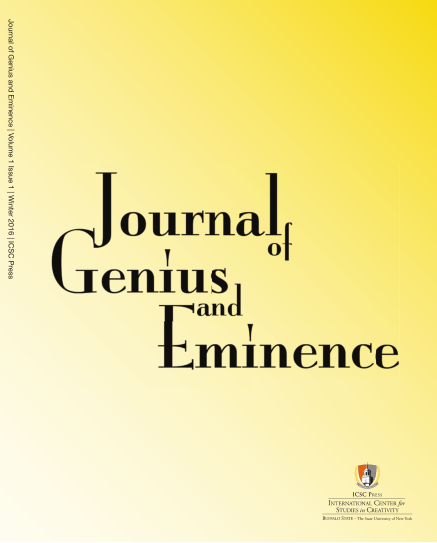


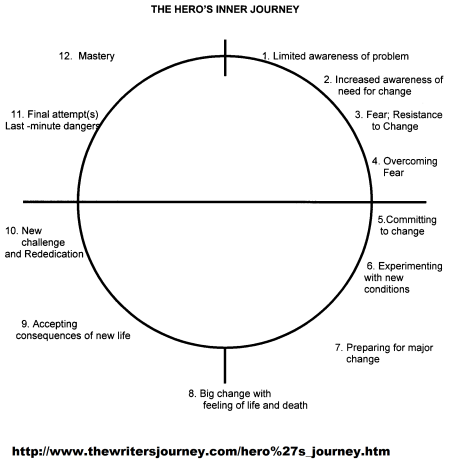

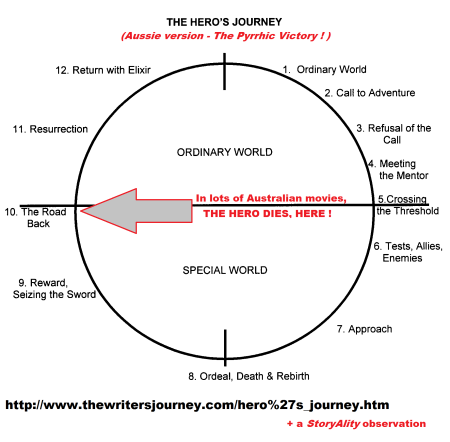
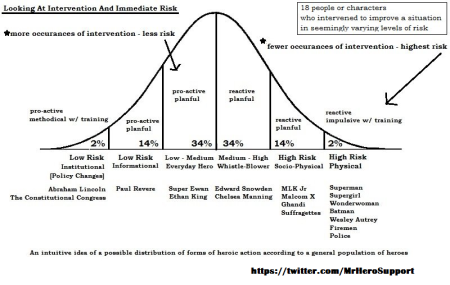



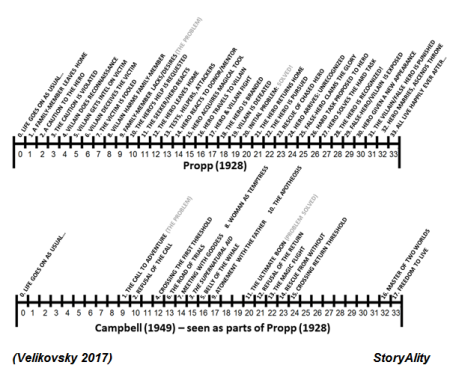
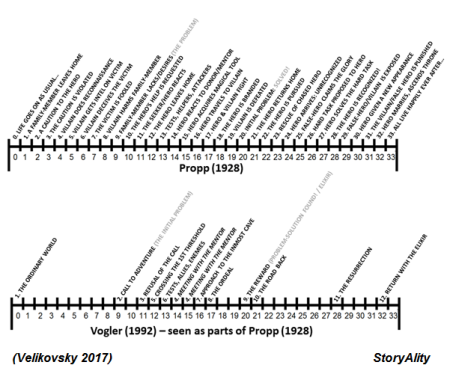



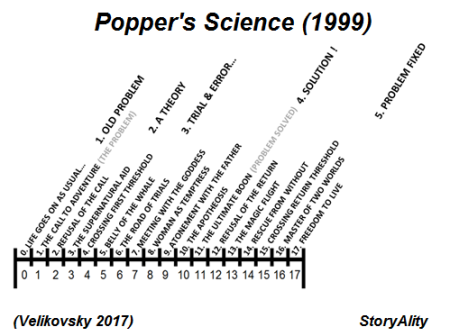
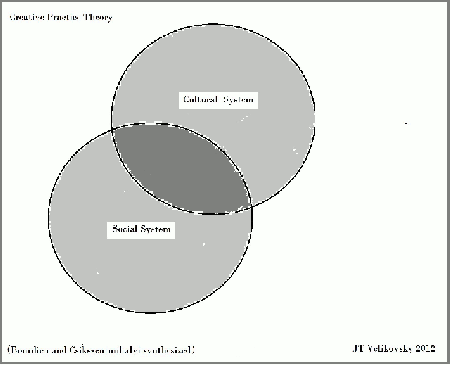
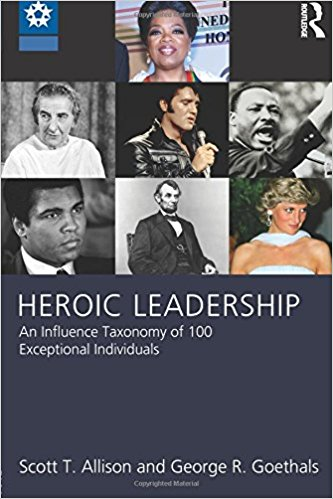


Great stuff JT!
Very similar to my book Script Symbology!
John
>
Great stuff, thanks John! I appreciate it.
Now, I have to go back and read your book, and – all of these! 🙂
http://www.scriptmag.com/features/columns/script-symbology/
(I am looking forward to it!)
Pingback: StoryAlity #6 – What is (big-C) Creativity – and How Does It Work? | StoryAlity
Great shit and mental masturbation!
Better read this : http://thereaderscompany.com/the-fallacy-of-the-heros-journey/
The steenky Alley-Rat is BACK! omg I totally forgot about you.
So – the great J C (Joe Campbell) once said “As you go the way of Life, French Continental-Philosophy Alley-Rats will try and shit on you. Just buy a cat, or even a flamethrower will do the trick nicely.”
Ding-Dong the Troll is Dead.
I deserve a Hero Medal for listening to your dumbass comments AlleyRat 🙂 Try reading what I wrote a couple more times. We are all much dumber for listening to your idiocy Rat-Nutz. If that even is your real name.
btw
So have you French Surrender-Monkeys quit any wars lately?
So I read your stupid link.
Read what I said again, then about 5 more times and please stop being so retarded all over the place in public. It upsets people to remember there are inbred French Neanderthal dropkicks like you still about. I thought we punched them all out of existence long ago, about 35k years. And if not why not.
Just kidding 🙂
All in good fun
I love you man
xoxo
One more screw-up to be credited to JC The Great hahaha!
I love you too man. Why do you waste your time writing such inanities instead of writing good stories ?
Have you READ all my good – I mean astonishingly GREAT – stories ??? This one was inspired by Nick Bostrom’s `Simulation Argument’. http://am-so-as.blogspot.com.au/
Pingback: StoryAlity#13B – Creativity, Cinema, Stanley Kubrick & Genius | StoryAlity
Pingback: StoryAlity#151 – Kubrick, Darwin and the monomyth in The Journal of Genius and Eminence | StoryAlity
Pingback: StoryAlity #28 – Screenwriting Manuals since 1911 | StoryAlity
Pingback: StoryAlity #27 – Narratology since Plato – a Brief Lit Review | StoryAlity
Pingback: StoryAlity #155 – Kubrick on Problem Solving | StoryAlity
Pingback: StoryAlity #78 – `The war of nature’ (Charles Darwin) | StoryAlity